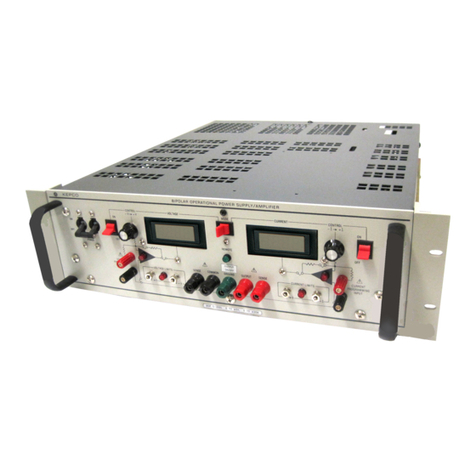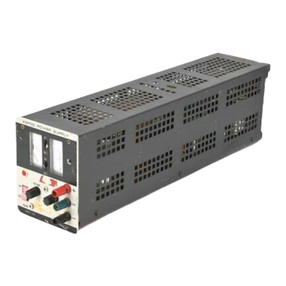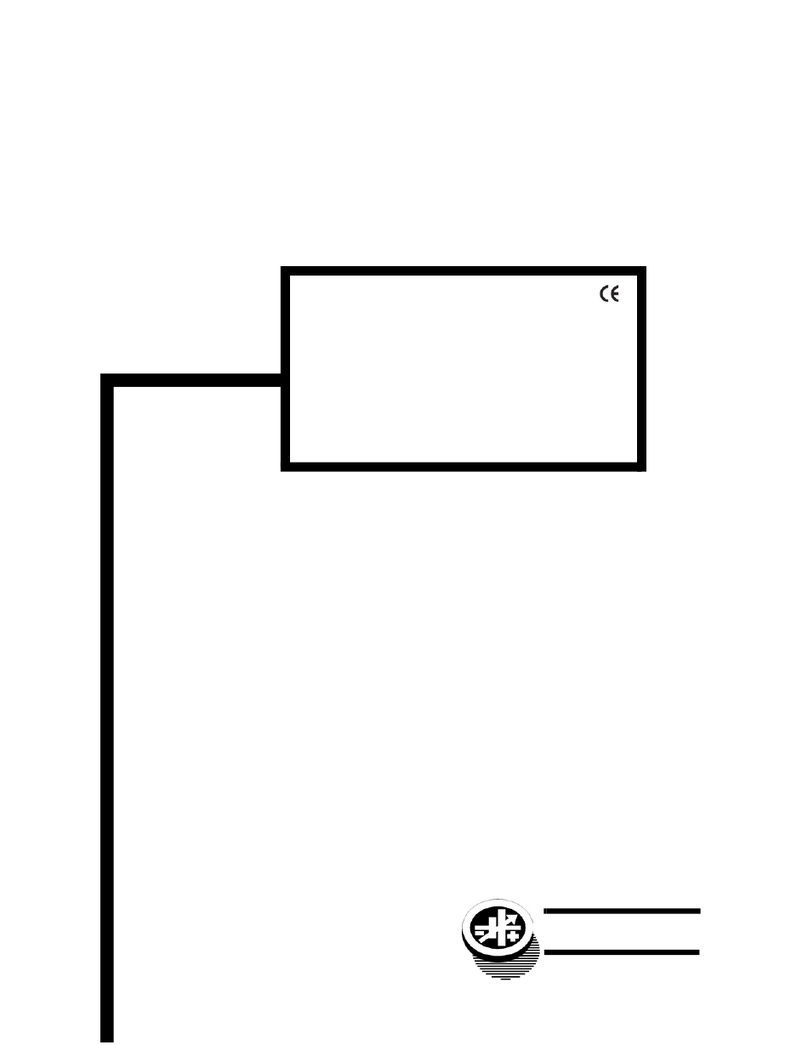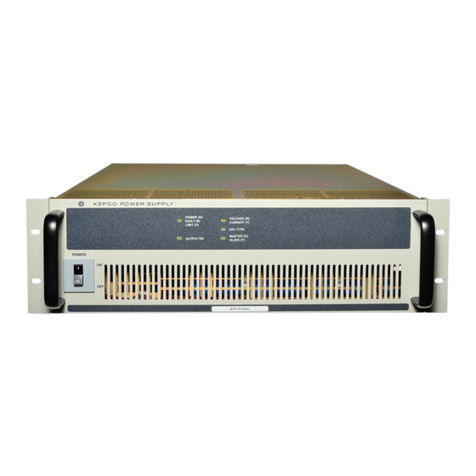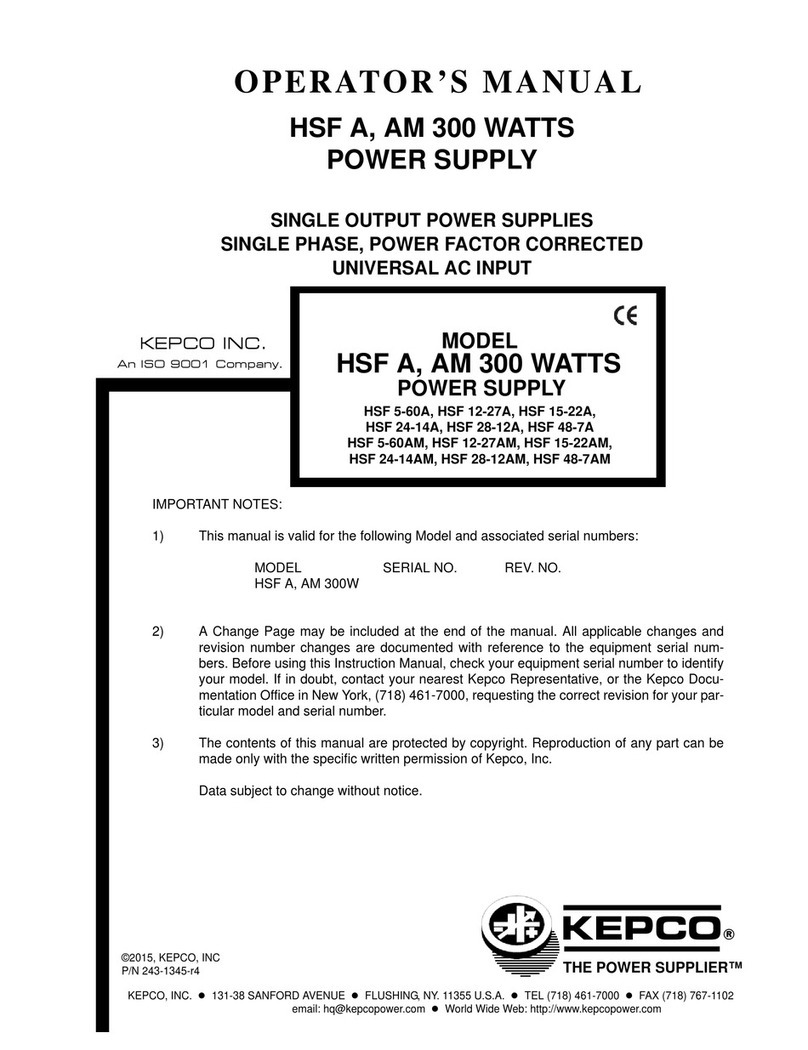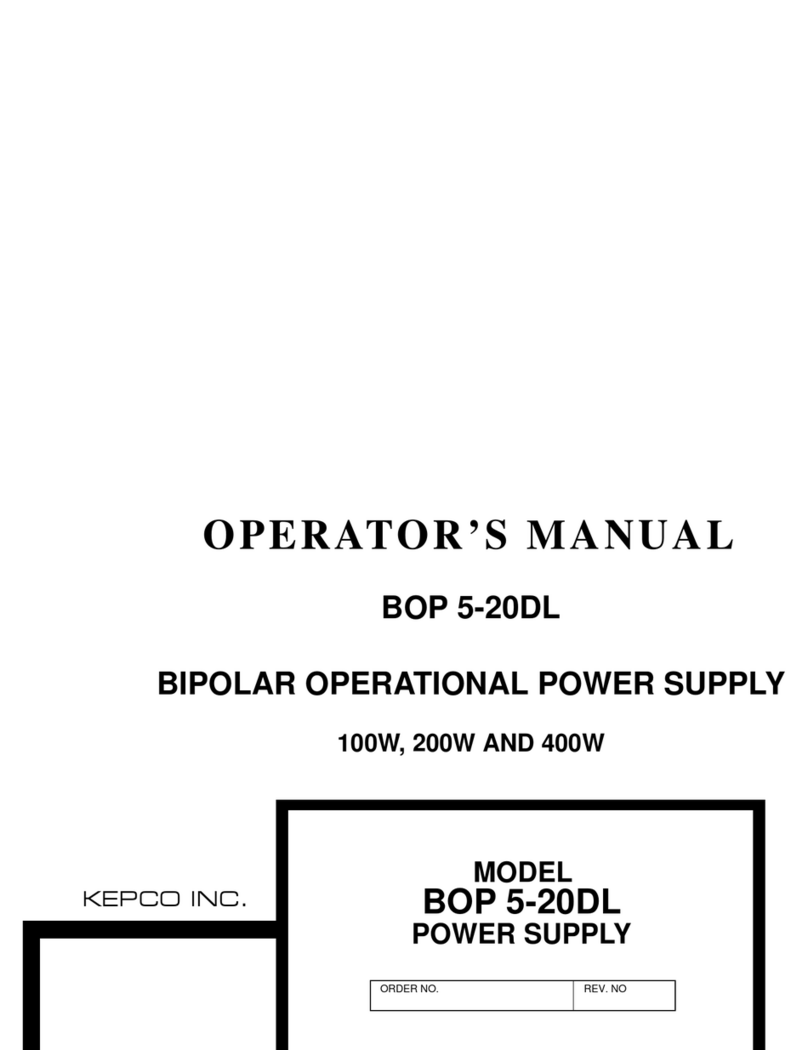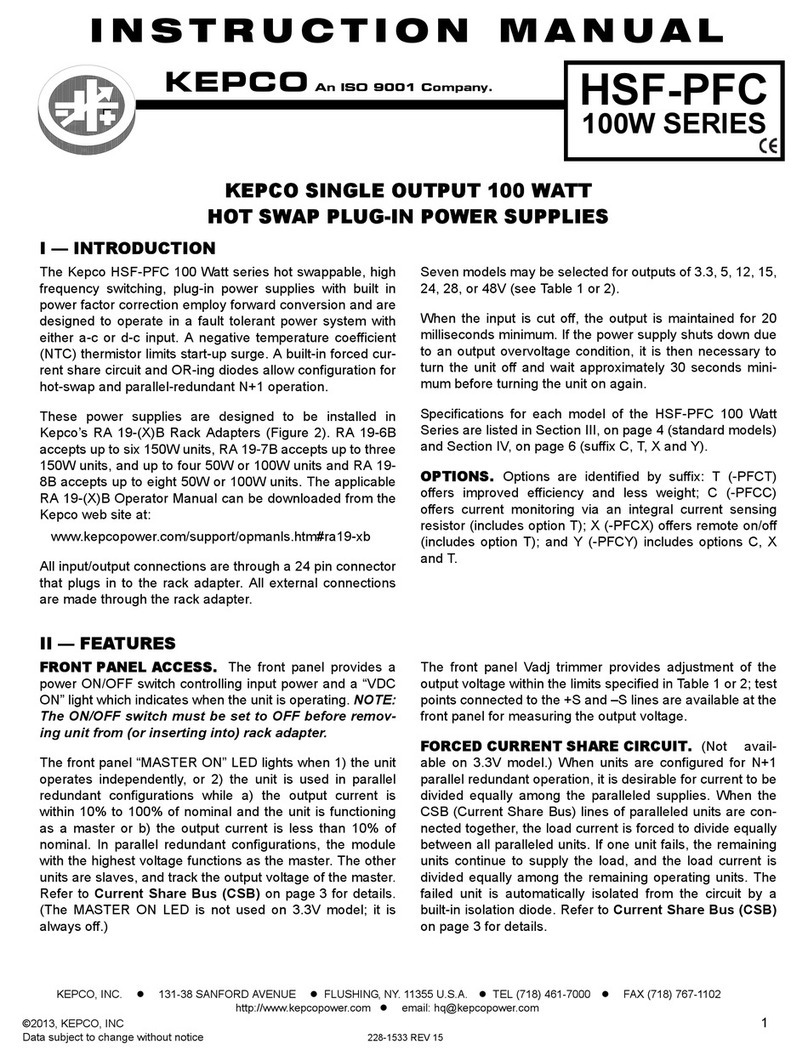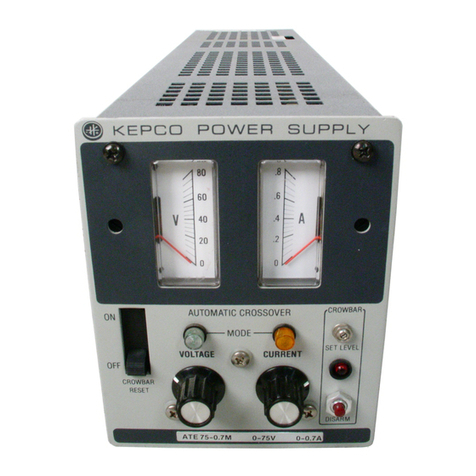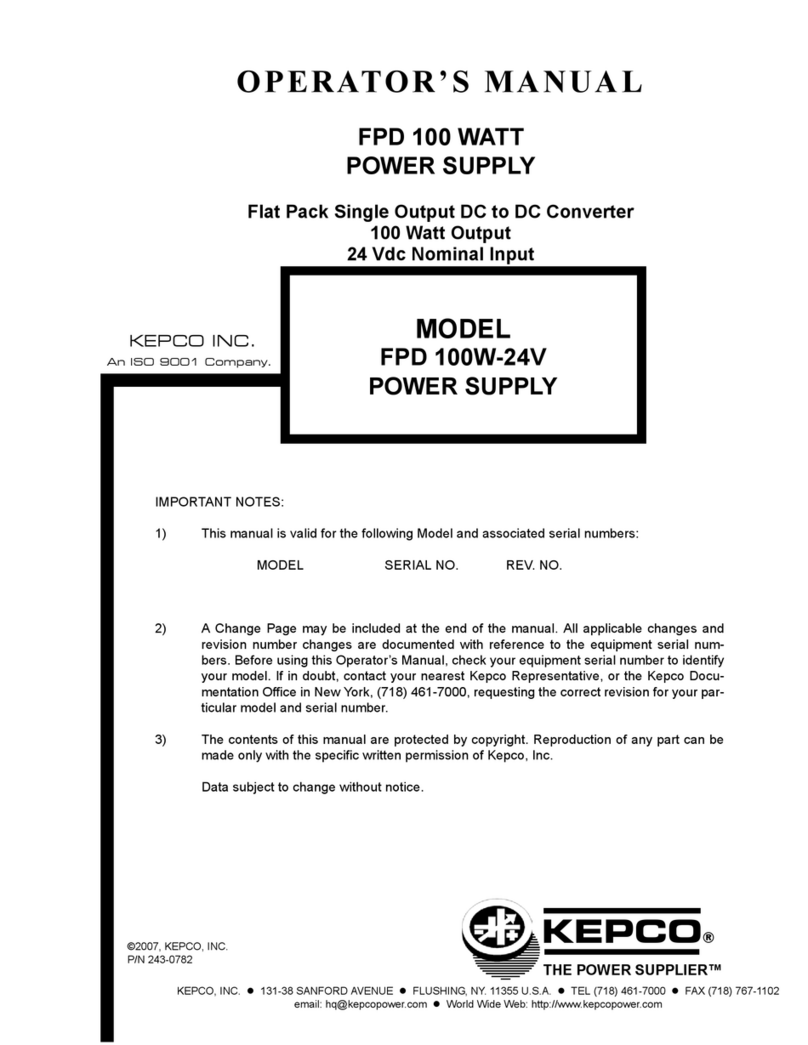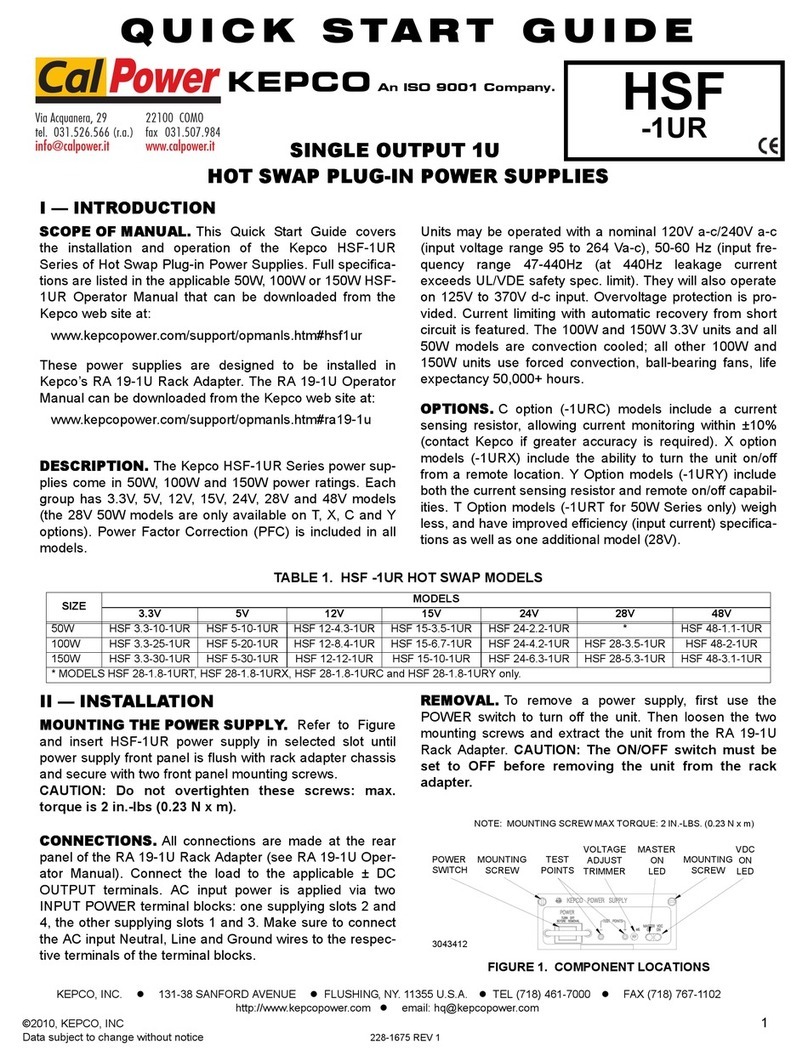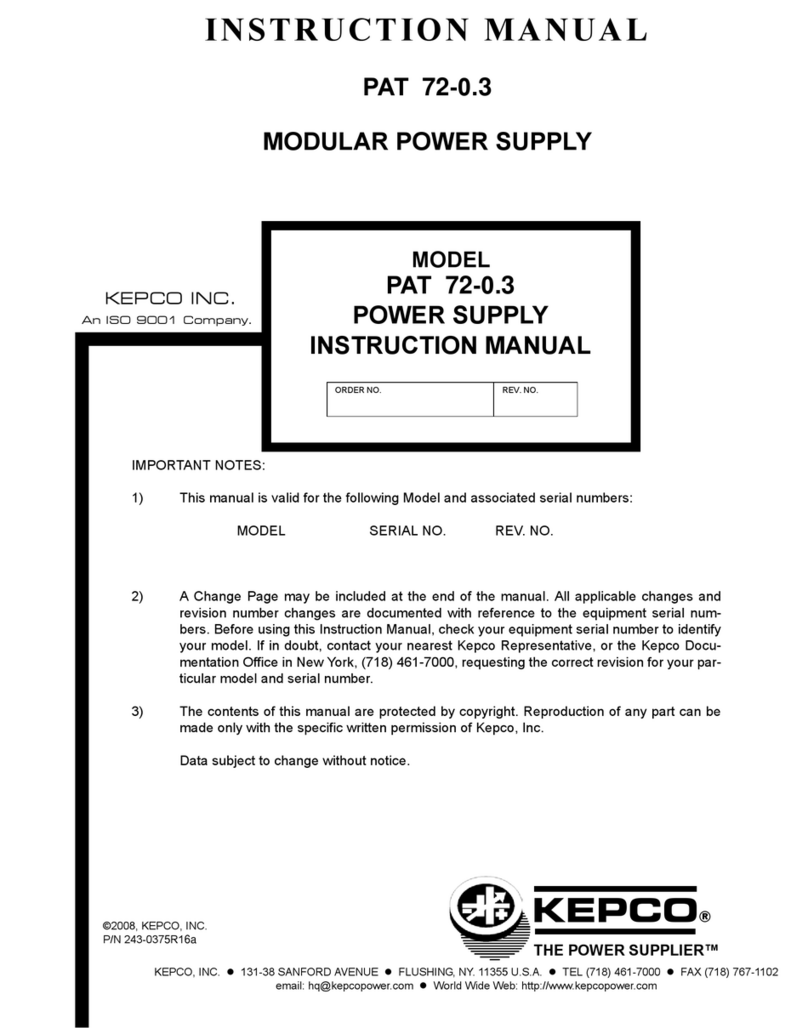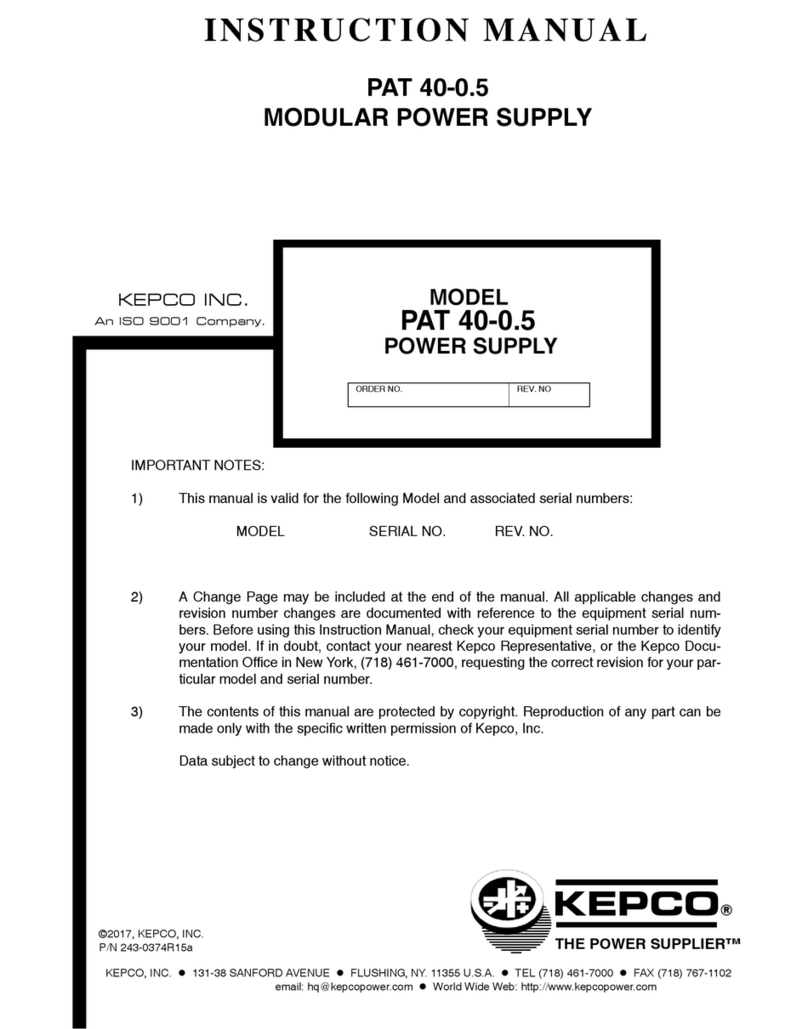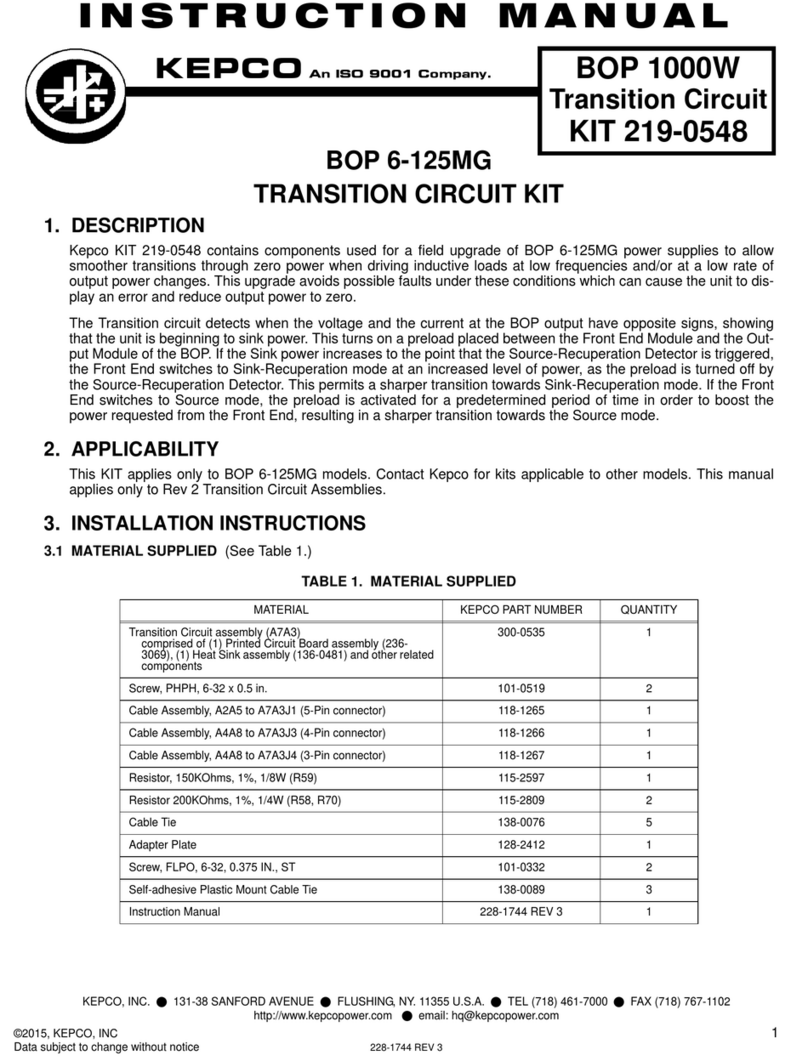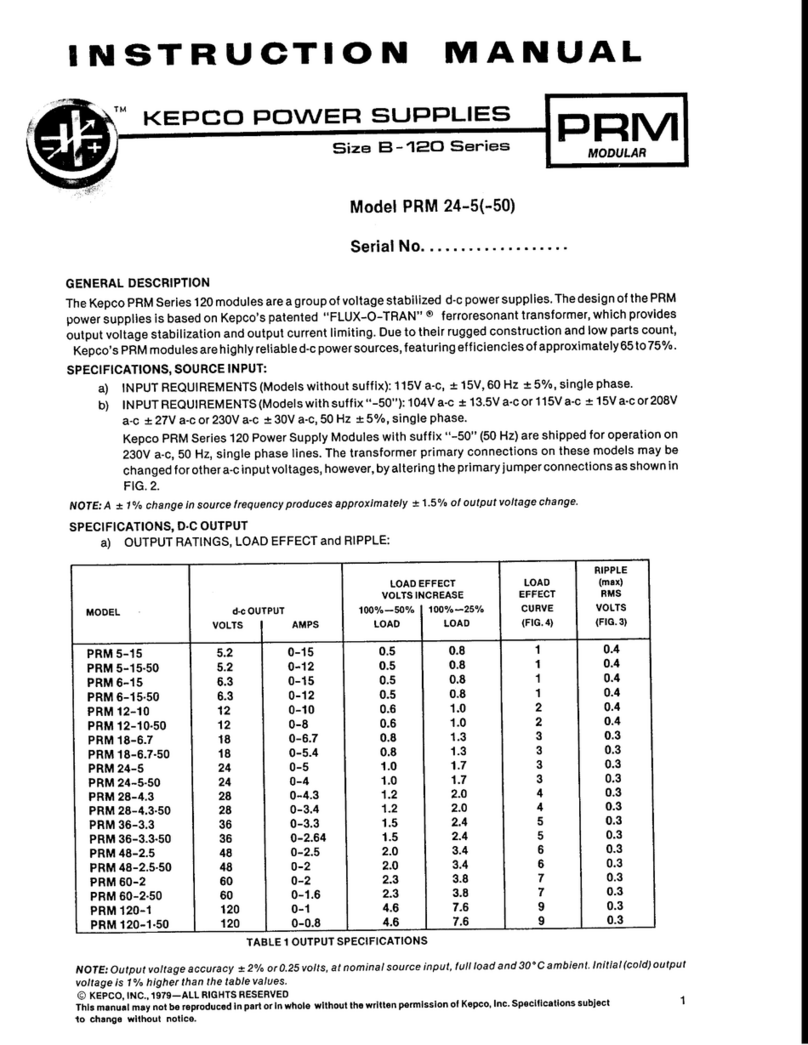
LIST OF FIGURES
FIGURE TITLE PAGE
ii BOP1000SVC 020411
1-1 BOP (High Voltage) Operational Power Supply ............................................................................................ iv
1-2 BOP Output Characteristic ......................................................................................................................... 1-4
1-3 BOP Output Waveform with Phase Shift.................................................................................................... 1-5
1-4 Mechanical Outline Drawing, BOP – HV .................................................................................................... 1-8
2-1 Location of Internal Calibration Controls .................................................................................................... 2-1
2-2 BOP Terminations and Controls................................................................................................................. 2-2
2-3 A-C Source Voltage Selector, Location...................................................................................................... 2-4
2-4 Rear Programming Connector Wired For Front Panel Operation .............................................................. 2-5
2-5 Rack Installation of the BOP ...................................................................................................................... 2-6
3-1 BOP Voltage Control Channel.................................................................................................................... 3-2
3-2 BOP Current Control Channel.................................................................................................................... 3-3
3-3 BOP (±) Voltage Limiting Circuit................................................................................................................. 3-3
3-4 BOP (±) Current Limiting Circuit................................................................................................................. 3-4
3-5 Basic 2-Wire Load Connection and Grounding Connections
Between the BOP and the Load .............................................................................................................. 3-4
3-6 Load Connection with Error Sensing and Grounding Connections
Between the BOP and the Load .............................................................................................................. 3-5
3-7 Remote Potentiometer Control of the BOP D-C Output Voltage................................................................ 3-9
3-8 Remote D-C Output Voltage Control By Means of a Two
Terminal Resistance (Decade) ................................................................................................................ 3-9
3-9 Digital Control of the BOP D-C Output Voltage.......................................................................................... 3-10
3-10 BOP D-C Output Voltage Control with a High Impedance, (±) 1V Signal Source ...................................... 3-11
3-11 Graphs of Possible BOP Input/Output Waveshapes.................................................................................. 3-12
3-12 Basic Programming Circuit for Use of the BOP as a
Bipolar Amplifier (Voltage Mode)............................................................................................................. 3-13
3-13 Programming Circuit for Driving the BOP Output
Voltage with a Bipolar (±1V) Signal ........................................................................................................ 3-14
3-14 Programming Circuit for Driving the BOP Output Voltage with a High
Impedance Source, Using the Non-inverting Input of the Pre-amplifier .................................................. 3-15
3-15 Local (Front Panel) Control of the BOP Output Current
with the Bipolar Current Control .............................................................................................................. 3-15
3-16 Remote Potentiometer Control of the BOP Output Current ....................................................................... 3-16
3-17 Remote Output Current Control By Means of a Two Terminal Resistance................................................ 3-16
3-18 Digital Control of the BOP Output Current ................................................................................................. 3-17
3-19 BOP Output Current Control with a High Impedance (±) 1 Volt Signal Source.......................................... 3-17
3-20 Basic Programming Circuit for Use of the BOP as a Bipolar
Current Stabilized Amplifier ..................................................................................................................... 3-18
3-21 Programming Circuit for Driving the BOP Output Current with a Bipolar
Signal Less Than ±10V (Example Shown: ±1V Source) ......................................................................... 3-18
3-22 Programming Circuit for Driving the BOP Output Current with a
High Impedance Source .......................................................................................................................... 3-19
3-23 Local (Front Panel) Control of the BOP Current Limit Circuits ................................................................... 3-20
3-24 Symmetrical Remote Control of the BOP Current Limits ........................................................................... 3-20
3-25 Independent Remote Control of the BOP (+) IOand (–) IOLimits ............................................................. 3-21
3-26 Local (Front Panel) Control of the BOP Voltage Limit Circuits................................................................... 3-21
3-27 Symmetrical Remote Control of the BOP Voltage Limit Circuit.................................................................. 3-22
3-28 Independent Remote Control of the BOP Voltage Limit Circuits................................................................ 3-22

